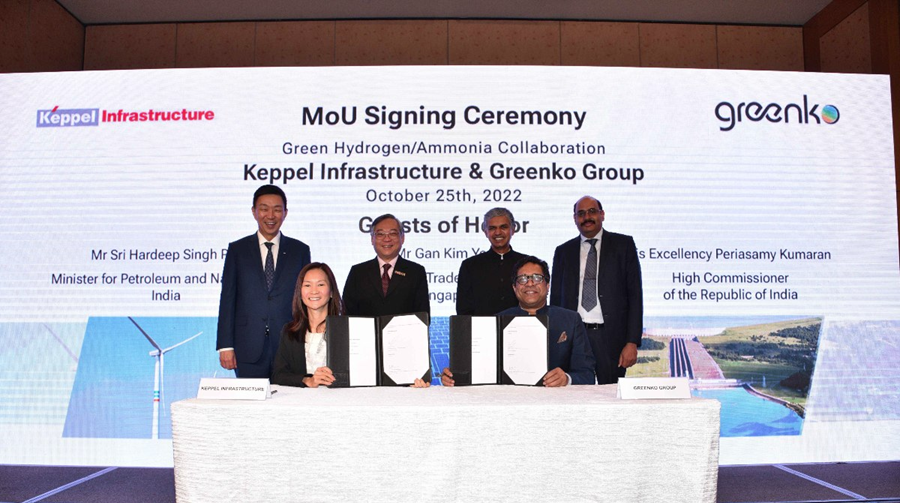Keppel Infrastructure, Greenko to explore ammonia production in India
By Julian Atchison on November 01, 2022
250,000 tonnes per year

The pair will explore a new renewable ammonia production facility in India, powered by 1.3 GW of solar, wind and pumped hydro generating capacity. In the announcement, Keppel Infrastructure and Greenko indicate the new project will help support the Indian government’s goal to manufacture 5 million tonnes of green hydrogen per year by 2030. The produced ammonia will go towards “demand for low carbon energy” in India and Singapore, and may also be used as bunker fuel.
Greenko has an extensive portfolio of renewable energy generation across India, totalling around 7.5 GW of solar, wind, hydro and integrated storage. This April, Greenko partnered with John Cockerill to launch a 2 GW per year alkaline electrolyser gigafactory in India.
Green ammonia, as a carbon-free fuel, and an energy storage medium, as well as a transportation vector for hydrogen, has the potential to play a pivotal role in the decarbonisation of the energy and heavy industry sectors…We look forward to working closely with our eco-system partners as we pursue scalable opportunities across the green ammonia supply chain and the related infrastructure, from production to transportation and delivery, including bunkering.
Keppel Infrastructure CEO Cindy Lim in her organisation’s official press release, 25 Oct 2022
The transformation of India from a carbon-based fossil energy importer to an exporter of renewable energy-derived products like green hydrogen, green ammonia, and other green molecules, is the cornerstone of Greenko’ s strategy for future growth.
Greenko CEO and MD Anil Kumar Chalamalasetty in Keppel’s official press release, 25 Oct 2022
Jakson Green
In related news, Indian energy major Jakson Green has announced it will partner with the state government of Rajasthan to build a $2.8 billion, 365,000 tonnes per year renewable ammonia production plant in Kota, northern India. The first phase of the project – 15,000 tonnes per year of ammonia – will be operational in 2025.